How to Navigate a French Market
A Bit of an in-depth guide to Shop the World's Prettiest Marchés
Du coup!
I may very well be Italian, and mostly write about Italian things. But, as I currently live in France, where I am currently running a small kitchen, going to the market weekly is part of my job.
As a long-time food photographer, markets have always been the places to go to look for truly beautiful vegetables, and, while Italian markets will definitely deserve the writing of a similar guide, French markets are truly and experience in itself and might feel daunty to the uninitiated. Here is a list of tips for those who would like to better navigate them, no matter where you are in the country.
If you have tips, or recipes that you want to suggest, or have written an article about similar topic, do not hesitate to add to the comments!
Today’s Soundtrack: Lo Pichon Trin - Duo Brotto Lopez
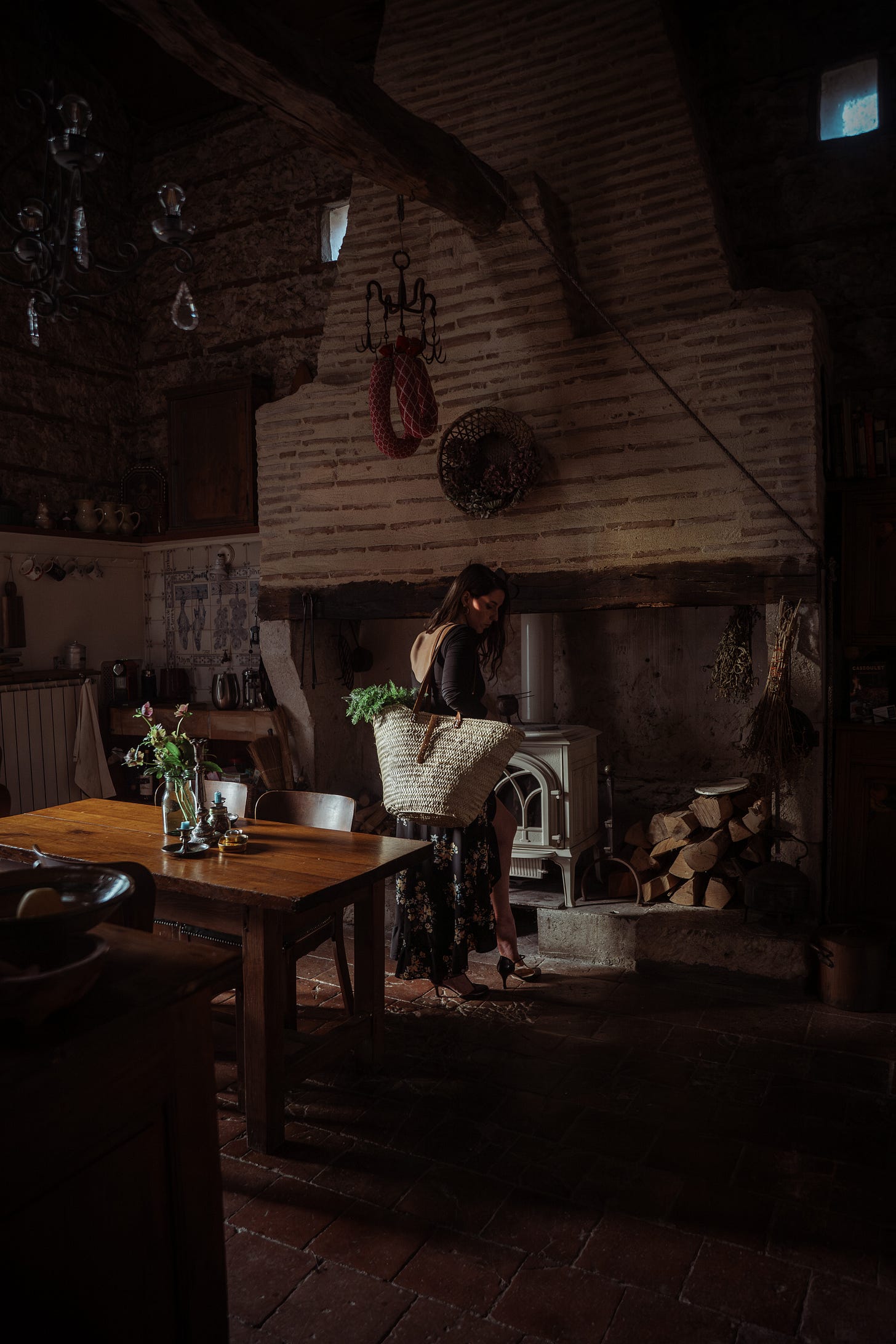
SOME GENERAL TIPS
Shop ingredient-forward. The market experience means that you’re shopping with the idea that you’re going to buy some great ingredients, and not necessarily with a recipe in mind. As markets are very seasonal, there are months in which truly local farmers will have no more than 4-5 different vegetables on their stall. Buy what inspires you and put it together in an inspired lunch that can also just consist on a great salad of mixed greens, cheese with honey, crunchy bread, and fresh fruit. If you’re not extremely familiar with the seasonal cycles of a specific area, going shopping with a recipe in mind might leave you disappointed when you don’t find the ingredients. See some recipe suggestions at the bottom of this post!
But if you go with a plan…the vendors will ask when you’re eating the stuff and select it for you accordingly. If you’re eating your fruits straight away, they will be giving you the ripest. If you tell them you’ll be waiting for a couple days, they’ll select something less ripe. If you go with a plan, go knowing what’s in season.
Seasonality is key and it extends to meat, cheese and seafood as well: Sometimes, you will find signs saying ‘now accepting orders for lamb’ or things like that during specific times of the year. October is the time for new olive oil, November is the time for goose and duck products, December is pork, spring is lamb and fresh cheeses, etc. Just like in Italy, there are ingredients you will not find year-round. And, just like in Italy, there are definitely some things that will only be available for a mere 2-3 week period. This remarks the previous point: shop what is available. After all, this is the real sign of local, healthy, genuine products.
If you can communicate, ask the locals and vendors what’s in season in the area.Go early. All the best things are sold well before 10 am. I sometimes go to the market to buy ingredients for the restaurant and I can definitely not go later than 9 am. Vendors bring a limited amount of stock - it is a very French thing to bring 50 even if you could probably sell 70. Going to the market at 11 or later will likely leave you with scraps, save maybe in very touristy markets.
People start leaving at 12.
The good thing about going late is that you might get some good deals on what’s left, as vendors want to clear up.
Know the department you’re in. Not just the region - you need to know the department too. For example, I’m in the region of Occitania (which is huge), in the department of Tarn. My neighbouring departments are the Aveyron, Haute-Garonne, Lot/Quercy…so I am likely to find regional products from these regions, like the fougasse Aveyronnaise or the Quercy saffron and cheeses. Learn a little bit about where you are and go in the hunt for local products.
Bring cash. I’m seeing a lot of vendors taking cards recently, but it’s still quite uncommon, especially for smaller stands. Also, French markets are really a no haggling thing.
Bring your own bag or basket. Vendors don’t always have bags for you, and definitely not many have plastic bags.
If you are not just passing by but moved there, try to get acquainted with your local community. Several vendors will be present in more markets around the area, and talking to them will get you in their good grace. It’s also a generally very nice thing to do. Especially if you’re in smaller villages, people will recognize you and call you by name before long.
Try and speak a bit of the language. Vendors are chatty and love to inform you about their products or suggest recipes. Of course, if you’re just there on vacation, nobody will demand you to speak French and several younger vendors will speak English. Still, some basic vocabulary and the general rules of politeness (merci / s’il vous plait / au revoir, Bonne journée) is going to get you a long way. Always start with a cheerful ‘Bonjour!’ Even if you’ll have to continue in English or gesticulate.
Prices: you will se that farmer market produce is not more expensive than the much produce found in supermarkets. It is often, in fact, even cheaper. Unlike Italy, supermarkets in France have a lot of vegetables coming from abroad. And, unlike Italy, supermarket stuff can be more expensive than the great stuff you can buy from locals. So go shop at the market and be happy.
Have a general walk around before buying, so you can get a feel for what’s there. After all, you don’t want to be in a rush. People will be there chatting and taking their time.
Do complete the experience by sitting at the local cafe afterwards. People will order drinks and lay the table with all the stuff they bought, cutting cheese, saucisse, shucking oysters and chatting loudly. In my opinion, this is the best part of the French market experience.
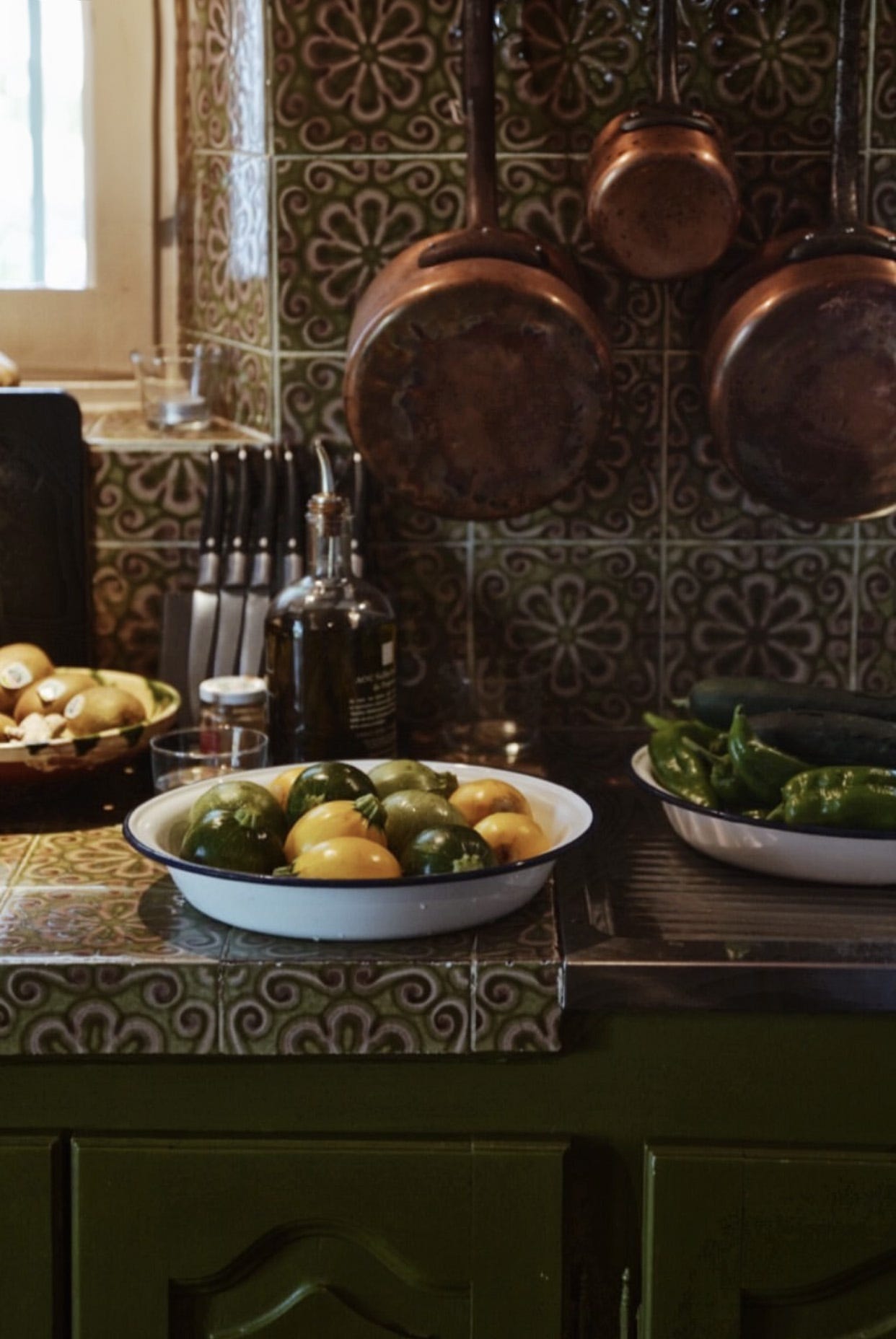
Here’s a little in-depth guide to the various things you will find at markets.
VEGETABLES
As already stated, seasonality is a big one here.
When looking for vegetables, you will find mostly three kinds of stalls: The large, more supermarket-like stalls that have a bit of everything, including bananas and avocados. These stalls get produce from third parties, sometimes from abroad, but look quite impressive with the large selection.
The small, local farmers with a much smaller selection: look for uneven, maybe even slightly bruised vegetables. While these vendors usually bring super fresh vegetables, you can tell they’re true small growers as their produce doesn’t look absolutely perfect.
Stalls selling just one thing, usually with a huge line: up until a couple months ago, the local market of Rabastens had a guy selling heaps of strawberries who was sold out by 9.30. In my area, where Lautrec garlic is famous, it is quite common to find sole sellers of garlic, while the last time I went to Bonnieux there was a lady selling but peaches and cherries.
Skip the first category and look for the second and third. Larger and more touristy markets might definitely have more produce from third parties, so have a good tour before purchasing.
You can also check the signs for provenance: the origin of vegetables is always marked.
Most stalls will have the vendors choose the veg for you, while some others will invite you to pick your own. As I’m the chef, I know the maraicher (greengrocer) and will personally rummage to find the kind of stuff I need for my cooking. Even though you generally don’t handle the products too much, there is nothing wrong in a little touching here and there. People aren’t obsessed with other people touching stuff with their hands here.
Avoid buying limp, old-looking vegetables. You won’t find many of them at markets, but once you get into the habit of buying from farmers you will see how actually ugly supermarket vegetables can be.
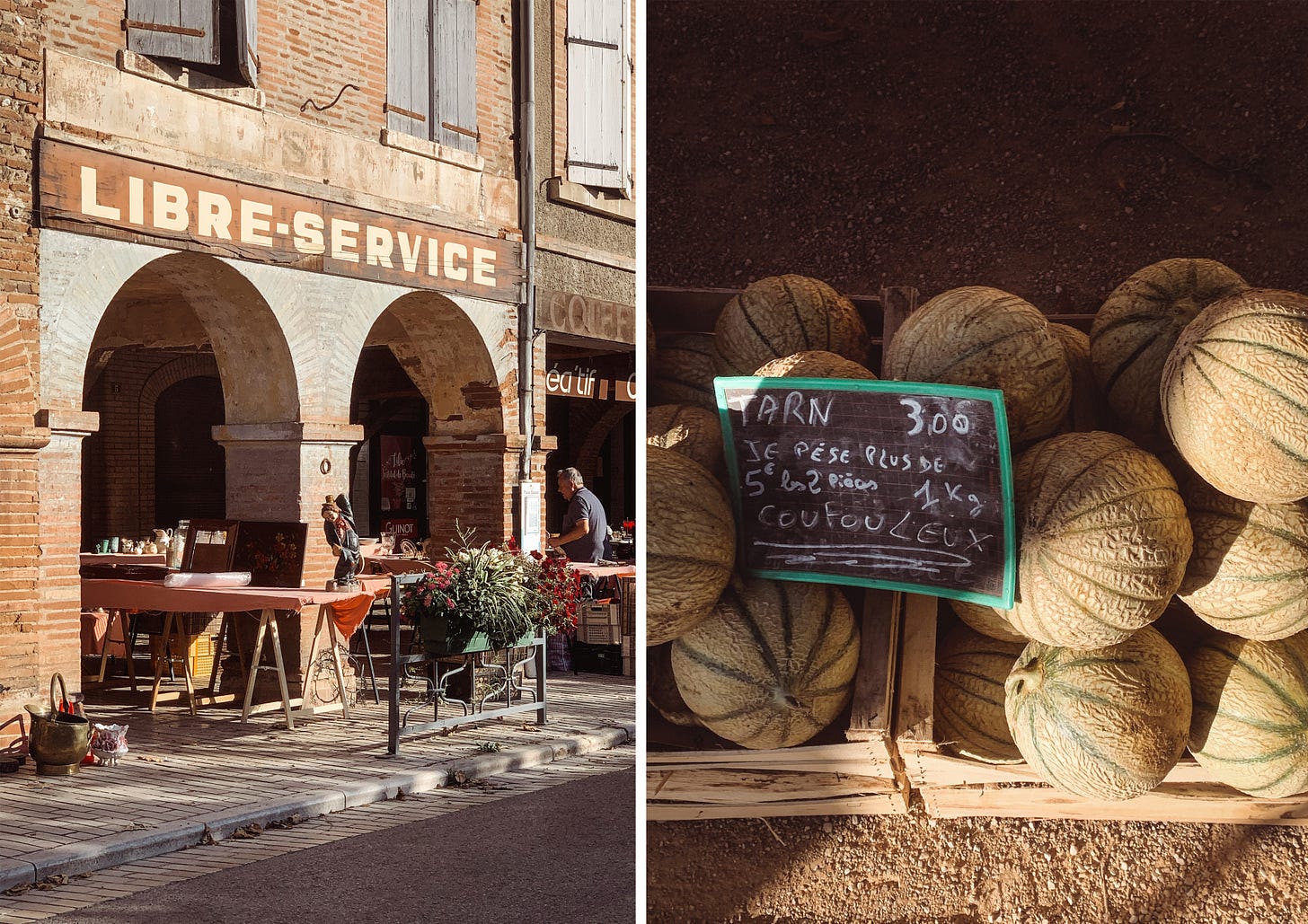
BAKERY
Bread is the first thing to go at the market. The best bakers will be sold out early and have a line, which means that is absolutely worth it. The French are great bakers and I suggest skipping the classic baguette in favor of a pain or flute de campagne, or one of the several breads they make with local grains.
Each baker will also have some local baked goods that are absolutely worth trying. If you see something with a local name or the name of the department you’re in, try it! You can also buy a pastry and then bring it with you to the cafe, so you can eat it while sipping your cuppa.
DAIRY AND EGGS
Navigating French cheeses is a huge endeavor which would need a series of articles in itself (which I would love to do for both Italian and French cheeses). The cheese you find in markets will 99% be local or from neighbouring regions.
The three great categories are vache (cow), chèvre (goat) and brebis (sheep). You will likely find different cheese mongers selling cheeses made with just one milk. I feel like there is no quick tip I can give you here if not ask the cheesemonger if you speak French, or just buy what inspires you. Sometimes, cheesemongers will have you taste the more seasoned cheeses so you can choose. This map of French cheeses might come in handy.
MEATS
Touristy markets usually have those stalls with lots of sausage in different flavors. Not that they aren’t good, but if you’re buying charcuterie might as well do so at the local butcher’s stall. The French have, obviously, many kinds of charcuterie (and no one knows better than on this account). It takes a long while to get acquainted with it, so just try what inspires you. If you want something cut very thinly, you need to ask for chiffonade.
PANTRY ITEMS
The market is a treasure trove for many pantry staples: olive oil (especially if you’re in Provence or the Gard), olives, tartinades (things to spread on bread - see my mention of the excellent Yoan here), garlic confit, but also local beers and wines, honey, locally made jams and drinks. The beautiful market of Saint Antonin Noble Val, located in Quercy, had an old man selling walnut oil, a tradition of the area. While markets in Provence will likely have lots of lavender honey. Again, region is key.
OTHER COOL THINGS
Sometimes, you will find some other local things, depending on the size of the market: sellers of handmade baskets, that one guy who sharpens knives, pottery, fabric, sellers of handmade knives, you name it. Sometimes you will also find non local things: products from other regions (I wish there were more Breton people selling Breton stuff!) or from other countries. Italian ingredient trucks are very common. In the South West, so are Portuguese. The larger the market, the more likely you are to find these things.
SOME MARKETS I LOVED IN the SOUTH of FRANCE
Aix-en-Provence (Provence - Bouches du Rhone, Tuesdays, Thursdays, Sundays) - Not that touristy, with a great vibe. Very, very busy in the summer. There is a Fragonard shop in the same square.
Uzés / Anduze = (Occitanie - Gard, Wednesdays and Saturdays, Thursdays in Anduze) Uzés is considered one of the best markets of France, and gets incredibly busy and touristy in the summer. If you don’t have the patience for traffic and lack of parking, go to the Anduze one. This is the easternmost area of Occitania, which still feels very much like Provence.
Saint Antonin Noble Val (Occitanie, Tarn-et-garonne, Sundays) one of the most beautiful markets I’ve ever been to. Medium sized, with plenty of beautiful stalls, live music, in the prettiest of towns. It is the place where the Hundreed-foot journey was filmed.
Cahors (Occitanie - Lot) I haven’t been to this one but planning to go next week. It is, supposedly, one of the best markets of France, set in a beautiful medieval town.
Nérac (Nouvelle Aquitaine - Lot-et-Garonne, Saturdays) - I maybe enjoyed this market so much because I went with Kate, but it was honestly so beautiful. Fairly big, with a huge selection of cheeses and local products. The town and cafés are lovely.
SOME MARKET RECIPES (Summer Edition)
~ ‘Shopping is Cooking’ by Kate Hill
~ My own guide to simply cooking vegetables. This works for most vegetables you can find.
~ My Recipe for Grilled and Marinated Zucchini
~ Market Recipes of May by Kate
~ Several Recipes with Peaches by
~ Shopping at the Market in Brittany by
~ My Guide to fresh Tomatoes in France and Italy
~ This Clafoutis made with Kate, which you can make with other fruits as well.
~ This Yellow Courgette Lemon soup by
If you have a recipe of your own that would fit into this category, add it to the comments!
USEFUL LINKS
~ Check market days all around France
~ Map of the cheeses of France
~ A great guide to french cheeses, divided by milk, region, family, with wine pairings!
~ Calendar of seasonal produce in France






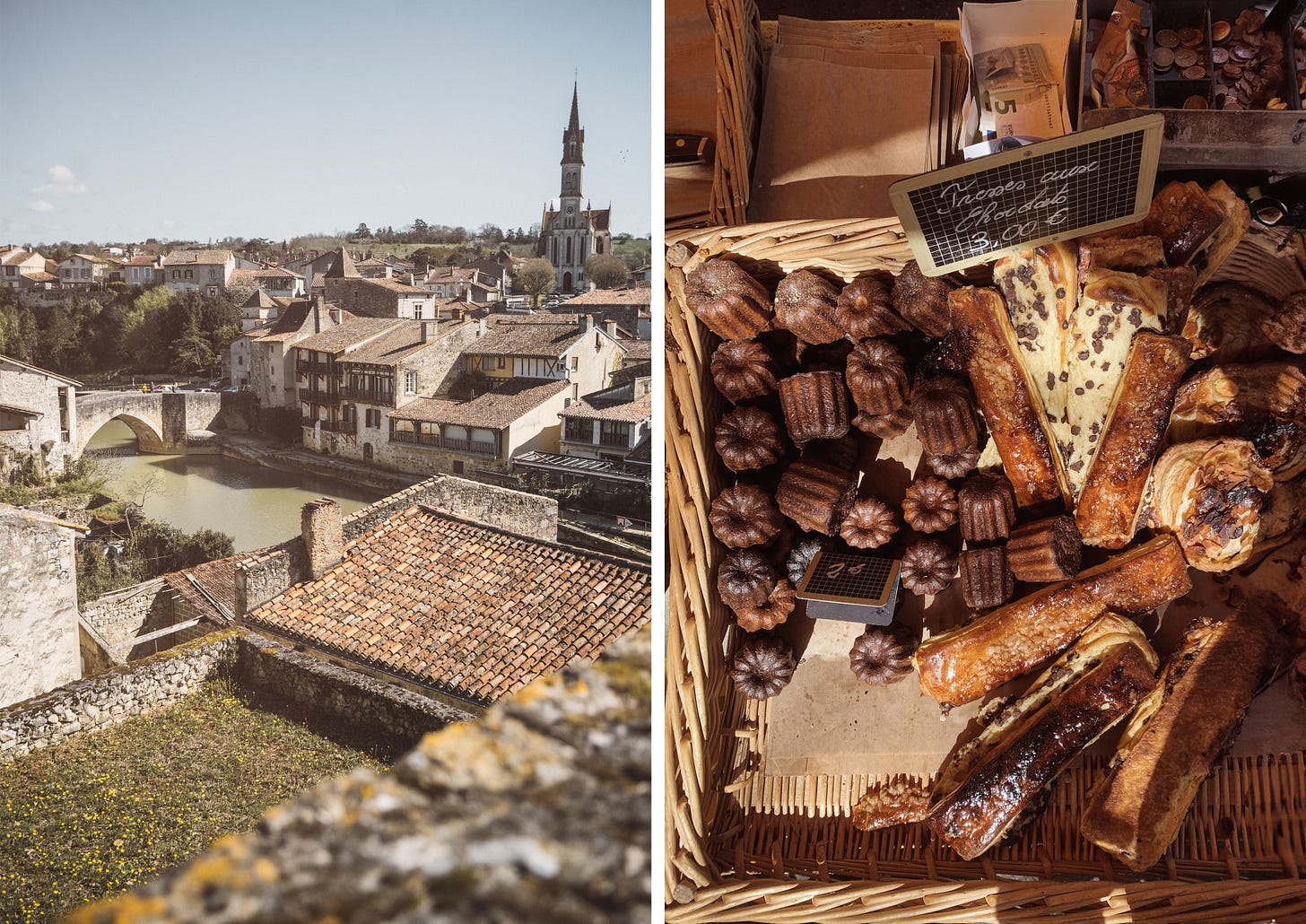
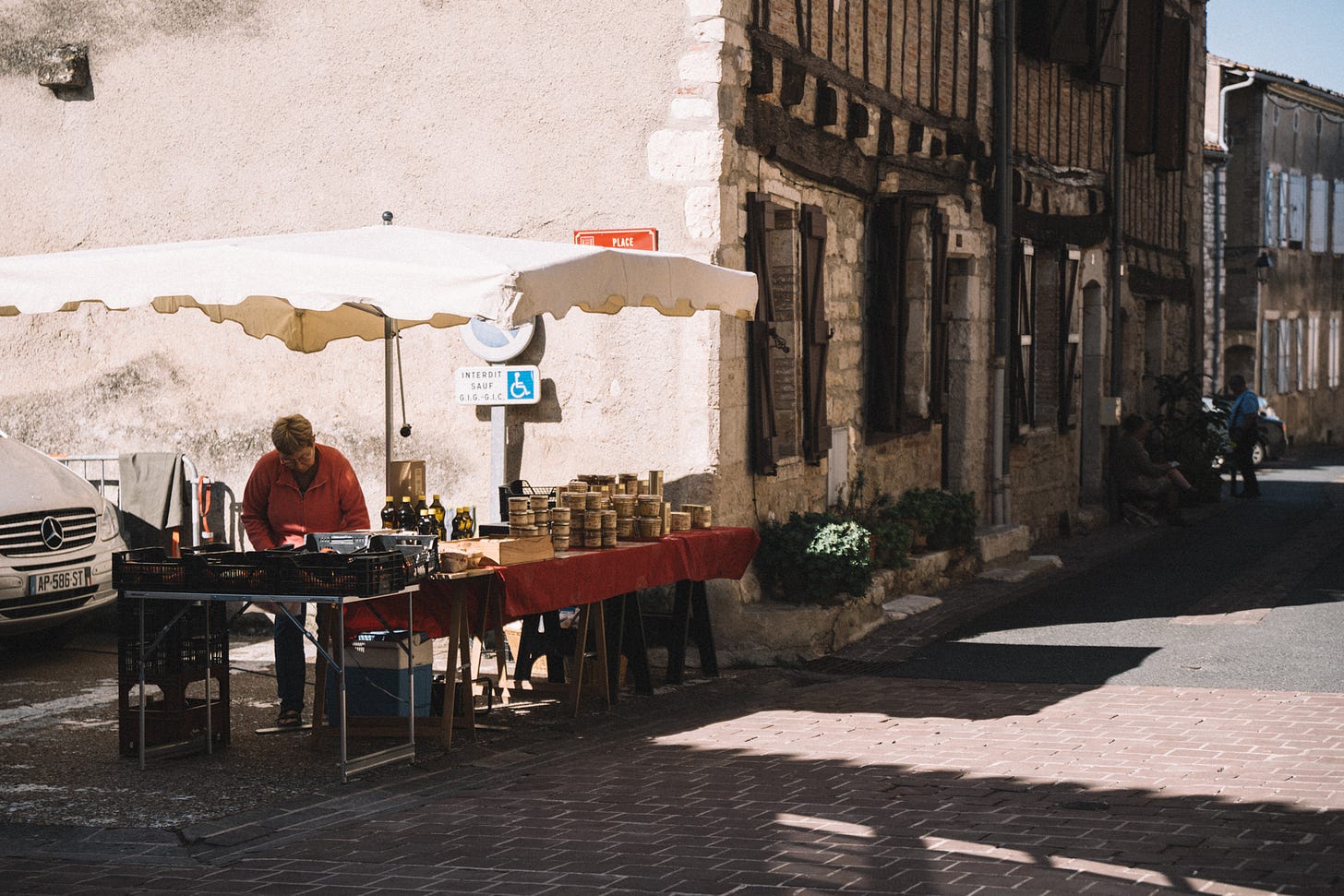

Loved this! Maybe you’ll get more Bretons over the next few months. Several of our local markets are only open seasonally (July/August) so after a break I wonder if they need to venture further afield?
Amazing post, I loved it. Market days in France are the best!